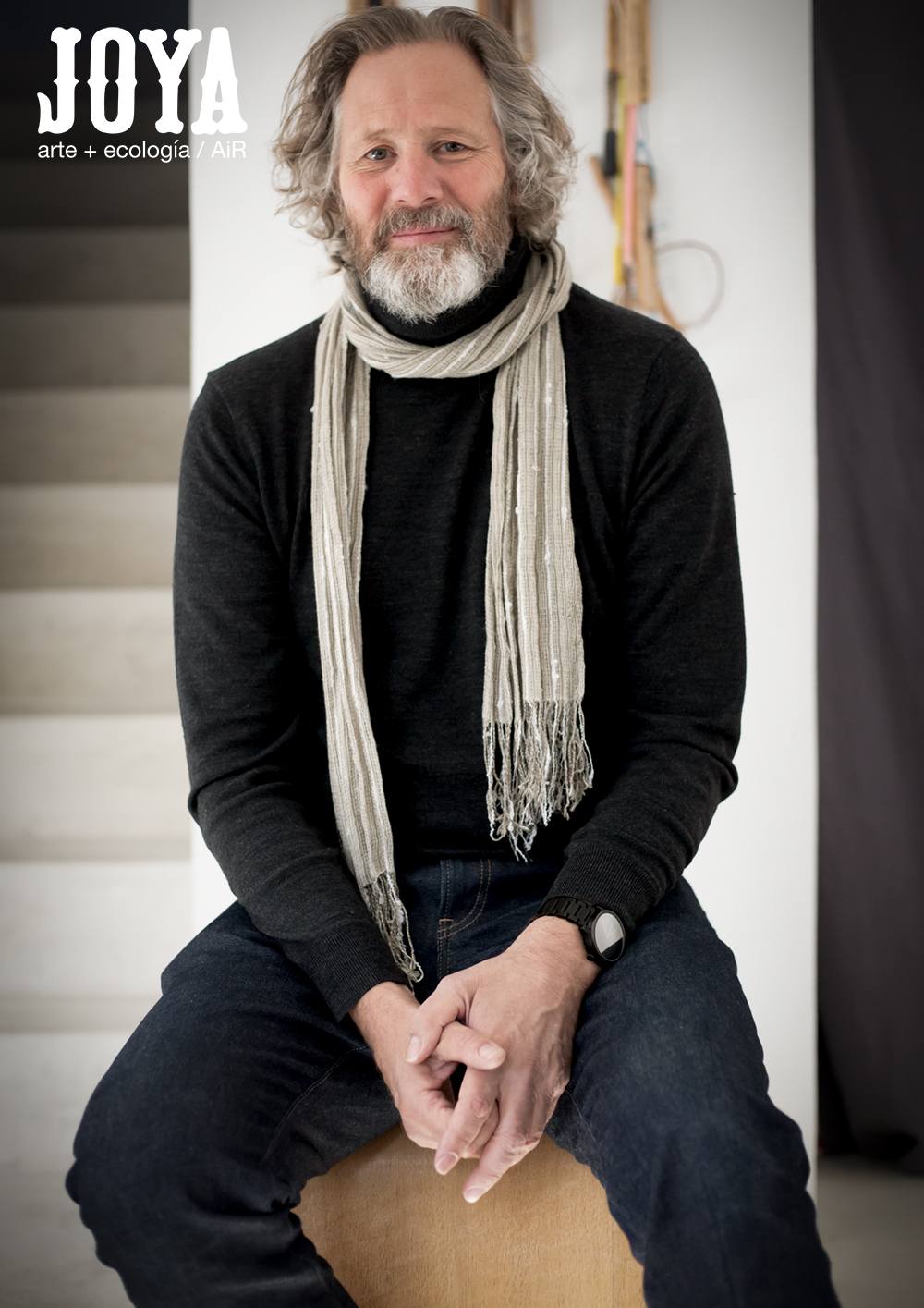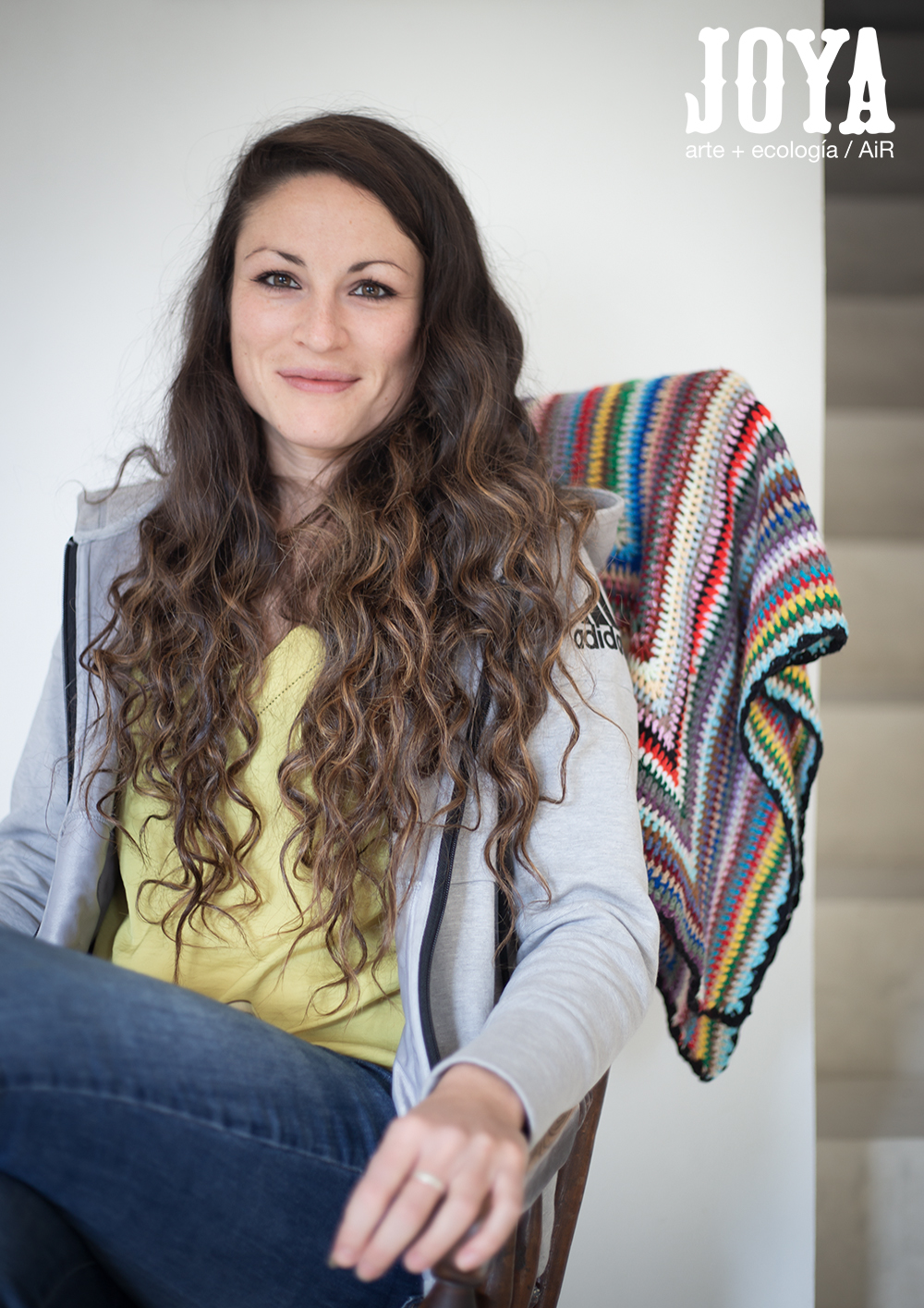“I keep coming back to layers and time—geologic, metamorphic, metaphysical, personal—and the way we understand them. Or, fail to understand our place in time. The way we use time, spend time, waste time, busy ourselves in actions and labor and production without reflection, without wondering whether we are happy, whether our busyness makes any contribution to care or beauty or meaning or joy.
We spend most of our days here, hearing almost nothing. It is so gorgeously silent that I’ve come to notice small things. The wind turbine, still and silent, suddenly animated by an invisible force, and sound emerges from the turning blades, piercing the quiet—making me suddenly aware of the wind on my own face, moving my hair against my cheek.
I am aware that I cannot hear birds in the daylight. They are briefly here in the early darkness and then they go somewhere else most of our waking hours, returning to the mountain late in the evening. I hear nothing but my own footsteps negotiating the rocky alluvial beds as sand slides beneath my shoes rhythmically shifting chalky stones to powder on the desert roads.
I am aware of my keyboard strokes. I am aware of a small honeybee flying nearby my ear. When someone else is near, we share quiet rhythms and our patterns become layered. My keyboard clicks, Louie’s weaving bobbin taps against the loom frame, French music plays softly from his phone. Caz’s paper catches a bit of breeze and flaps about.
We are all engaged in a dance to understand one another’s rhythms—of waking, sharing coffee and kitchen space, working, walking, talking, sharing space in the studio or on the sunny west facing wall at sunset, or sharing wine, or conversation at dinner, of resting and reading and working again into the night. Knowing how to be in a shifting space with others, all creative and differently paced, from cultures and languages and traditions and disciplines and time zones that daily shift the balance and cause one to renegotiate one’s own contribution to the whole, as well as when to withdraw and retreat from it to create.
We are each layered in this space and these moments, for a brief time of regeneration, reflection and renewal. Are we called to produce work while in residency—or is this a time to be fully exploratory, where we are fully permitted not to produce, but instead to be porous and to draw love and care and newness into ourselves without expectation or commodification of the time spent? Are we permitted to just exist and move and walk and collect and observe and rest and dream and wonder?
* * *
Stringing up Clotheslines and Standing Beneath Stars
Topography/Geology/Cosmology
Wonder/Magic/Alchemy
What do the clotheslines mean? Are they about domesticity, repetition, feminine work, in concert with daily rhythms? It feels like it might be about the layers again, and about time? We are so small and insignificant in such a vast landscape. But here, where water and resources are vastly differently regarded, even the simple work of washing takes on a different level of importance than it does at home where water is not regarded at all.
I save my bucketfuls of cold shower water to refill the cistern tanks—and those two buckets matter. Here small acts are significant in ways you rarely consider. Every turn of the wind turbine is a reminder that the wind is a gift and that it is needed and valuable and provides energy for the pump to bring water through the copper pipes to the sinks and the showers.
In this landscape, the elements are regarded with care and the rhythms of wind and sun and light and darkness, dryness and rain are present with such clarity here that it is impossible to take any of these things for granted.
We have learned to adjust our own patterns to the established rhythms of the high desert; we work with the daylight, we use water as if it is precious (and it is), we make our creative work and take our walks and warm our bodies outside most of the day—in the warming sun, and then in perfect concert with the sun, we retreat to the woodstove as soon as the sun slips behind the mountain peak, where we gather afghans and our dog-eared books to read and reflect and collect our thoughts.
Heat is not taken for granted either—not like a furnace at home—but instead the fire attracts us to it, like kids around a campfire. It feels physically wonderful and everything about the wood heat and the setting of the gathering room, in fact, invites us to gather. Layered in colorful down pillows and afghans and soft light and fireglow. It makes me think about why most living rooms focus on the television and not on each other. Here, conversation and care flow easily.
And, meals here are about so much more than feeding the body calories—hours are spent preparing fresh simple ingredients into layers of color and flavors and textures and aromas. We eat Spanish time, about 9 pm and the anticipation of what might emerge from the kitchen is part of the joy here. Always simple, usually vegan, made from humble ingredients—sweet potatoes, chickpeas, couscous, quinoa, lemon, fresh greens, beautiful aromatic herbs.
We have bottles of local wine and a table set with pillar candles every evening and we stay at the table, gathered and telling stories lingering for hours after dinner. I am enamored with their ability to keep a conversation so incredibly funny and lively. I am aware of how much we don’t know about the art of hosting while I am in the presence of gifted thinkers and storytellers. Every night has been deeply affecting—or hysterically funny.
Our usual rhythm: coffee, coffee, coffee, tea, tea, beer, beer, wine, sip of water at dinner, then wine, wine and wine.
* *
Layers and time and rhythms and value/Commodity/Labor
When do we get time to sort it all out?
I think this is my reason for being here. To be. Just be. No prescribed reason or schedule or expectation of labor or output. We already do that all the time. Here in residency is a re-set, a time to consider things or rest or think different thoughts—reading, walking, making—or not making, evaluating what it all means—all of it—and being open and willing to be fully porous—to whatever else there is, and perhaps making different (or the same) choices in our lives. Are we on the path we want to be on? Are we making decisions and choices that we’ve actually consciously chosen or are we on a conveyer belt to God knows where without considering other options?
We can choose to put ourselves in the path of beauty, but do we? Have we?
Do we surround ourselves with beauty in the objects we keep in our private spaces, our public spaces, our work spaces? In the activities we choose? In the daily work we do? Do we choose to surround ourselves with beautiful spirits and creative, optimistic lovers of life, or not? Why not?
So, layers….
Sunlight, folds, ripples, waves, moving in invisible currents.
Buttery yellows pressing up against azure color fields. Cloth and wind.
Starry, glittery twinkling flickers in an impossibly vast Universe, under which I am imperceptibly small. I am obsessed every night to witness them. To just be underneath them. In awe of them. Time will pass whether I see them or not, but I want to be here, awake. I want to be present. I want the magic.
The sheets are probably about magic too.
The golden hour is so brief—never an hour, of course—ten golden minutes if you’re lucky enough to catch it. And, I want to be there too. To be present for the final performance of the evening. The final act before we all retreat inside, and gather around a different radiance. The light is everything. Aren’t we all drawn to the light? The warmth of fire, of candles, of sunrises and sunsets, of color and heat and all-consuming oneness with something vast and beautiful?
* * *
We do not walk on the earth
but in it, wading
in that acid sea
where flesh is etched from
molten bone and re-forms.
In this massive tide
warm as liquid
sun, all waves are one
wave; there is no other.
--Margaret Atwood
Circe/Mud Poems
* * *
Thank you Donna and Simon, Soli and Sessi for sharing your magic. I am humbled by the daily ways you transform the humble into the extraordinary through JOYA. Caz, Natalia, Catie, Dayna, Lucy, Louie, Bjørn, Mia, Maria, Violetta, Mai—your light warmed my spirit—each one of you a treasured part of my experience of this magical space and time.
xo, Jennifer 'Jenny' Wenker
www.jenniferwenkerart.com
Jennifer Wenker is a curator and conceptual eco-artist living and working near the Appalachian foothills. Born into the era that also birthed the environmental movement, the feminist movement and social and racial justice movements, Jennifer was brought up in an era of both peace and protest, echoing her family’s Quaker heritage of active social justice and non-violence. Intellectually and spiritually, her curatorial and studio practice reside in that "in between" space, negotiating conflicting points of view and drawing connections. Her home, the edge of Appalachia--a financially impoverished area rich in scrappy resourcefulness--is often reflected in her work’s thrifty DIY sensibility. Jennifer’s work is infused with a natural ecological awareness—of cycles—interrelatedness and interdependence. Her studio work is smart and spare in form, ripe with conceptual content and poetry, deftly moving among photography, sculpture, dust paintings, mud and manure seed bombs, video, installations, community art actions and dialogical engagement. Her curatorial focus is on cross-pollination between seemingly divergent ideas and areas of thought.
Since 2014, Jennifer has been the Creative Director of the Herndon Gallery at Antioch College, an historically activist and progressive liberal arts college with a strong history of environmental and social justice work, where she has been curating contemporary interdisciplinary exhibitions which directly engage with critical social-environmental issues.
Jennifer Wenker
Creative Director of the Herndon GalleryChair of Arts at Antioch
























